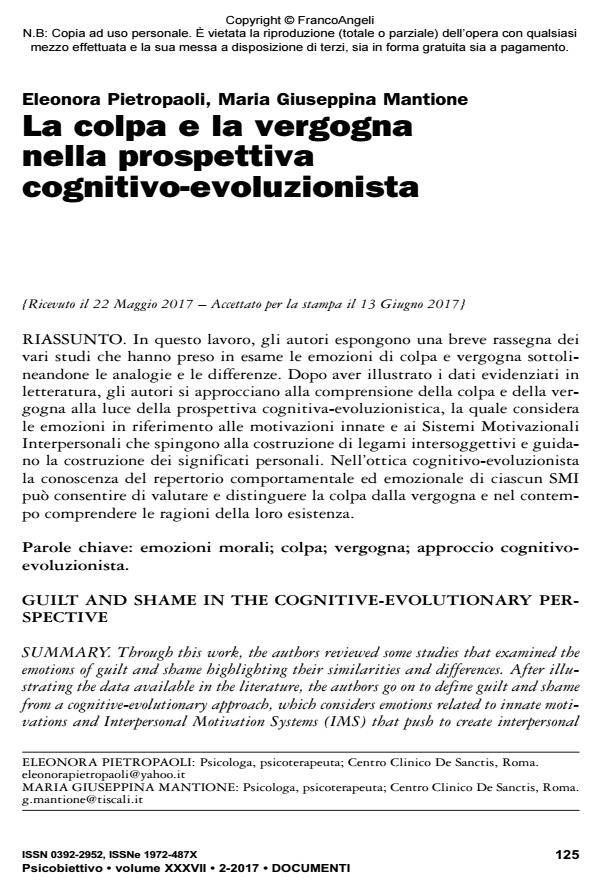La colpa e la vergogna nella prospettiva cognitivo-evoluzionista
Titolo Rivista PSICOBIETTIVO
Autori/Curatori Eleonora Pietropaoli, Maria Giuseppina Mantione
Anno di pubblicazione 2017 Fascicolo 2017/2
Lingua Italiano Numero pagine 18 P. 125-142 Dimensione file 120 KB
DOI 10.3280/PSOB2017-002010
Il DOI è il codice a barre della proprietà intellettuale: per saperne di più
clicca qui
Qui sotto puoi vedere in anteprima la prima pagina di questo articolo.
Se questo articolo ti interessa, lo puoi acquistare (e scaricare in formato pdf) seguendo le facili indicazioni per acquistare il download credit. Acquista Download Credits per scaricare questo Articolo in formato PDF

FrancoAngeli è membro della Publishers International Linking Association, Inc (PILA)associazione indipendente e non profit per facilitare (attraverso i servizi tecnologici implementati da CrossRef.org) l’accesso degli studiosi ai contenuti digitali nelle pubblicazioni professionali e scientifiche
In questo lavoro, gli autori espongono una breve rassegna dei vari studi che hanno preso in esame le emozioni di colpa e vergogna sottolineandone le analogie e le differenze. Dopo aver illustrato i dati evidenziati in letteratura, gli autori si approcciano alla comprensione della colpa e della vergogna alla luce della prospettiva cognitiva-evoluzionistica, la quale considera le emozioni in riferimento alle motivazioni innate e ai Sistemi Motivazionali Interpersonali che spingono alla costruzione di legami intersoggettivi e guidano la costruzione dei significati personali. Nell’ottica cognitivo-evoluzionista la conoscenza del repertorio comportamentale ed emozionale di ciascun SMI può consentire di valutare e distinguere la colpa dalla vergogna e nel contempo comprendere le ragioni della loro esistenza.
Parole chiave:Emozioni morali; colpa; vergogna; approccio cognitivo-evoluzionista.
Eleonora Pietropaoli, Maria Giuseppina Mantione, La colpa e la vergogna nella prospettiva cognitivo-evoluzionista in "PSICOBIETTIVO" 2/2017, pp 125-142, DOI: 10.3280/PSOB2017-002010